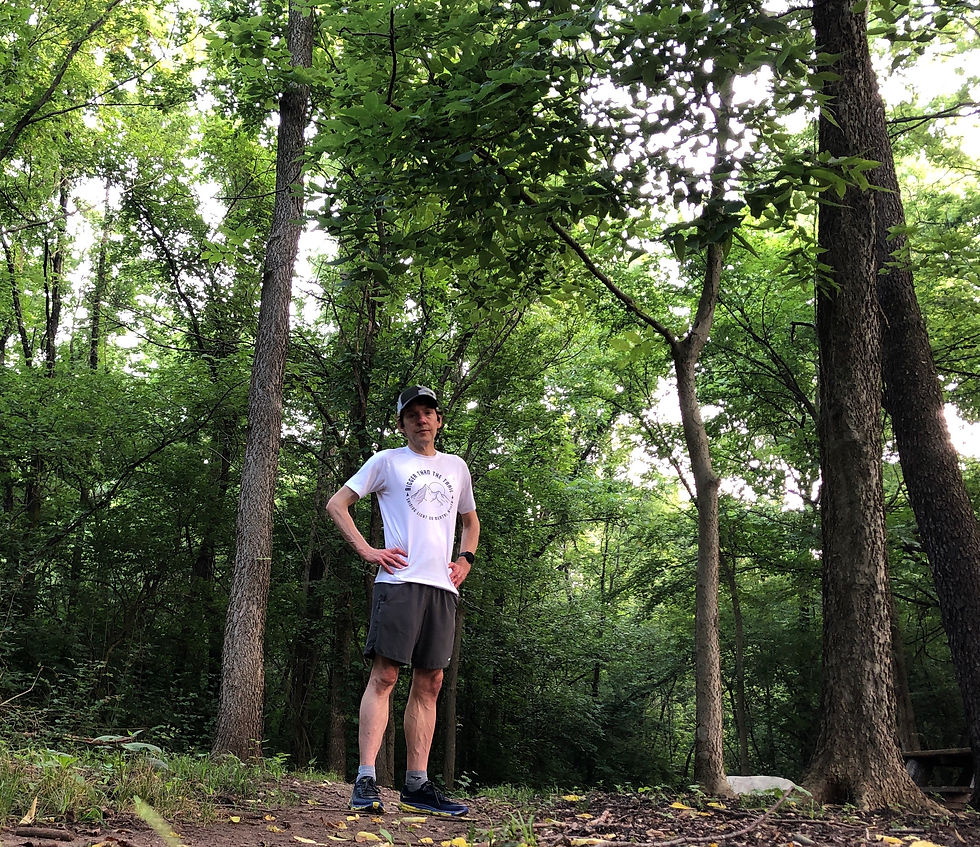8 tips on running your first ultra
- Henry Howard
- Aug 2, 2021
- 4 min read

By Henry Howard
Two months from today, one of my athletes will run her first ultra, a 50K. Another athlete who I picked up last week wants to run an ultra as a long-range goal.
As ultras grow in popularity, there will be more first-timers at these events. The ultra running community is incredibly welcoming as newcomers find out while, at the same time, discovering a lot about themselves.
I’ve learned a lot since my first ultra, five years ago at a 50K in Ohio. Now, I have about a dozen ultras under my belt, ranging from a 28.3-miler (a marathon rerouted due to pandemic modifications in 2020) at the Hungerford Marathon to the 100-mile Rio del Lago. At this point in my running journey, I enjoy trails and therefore ultra running more than traditional road races. I recover more quickly from trail runs and races, and relish the freedom and beauty I find in nature.
So, how do you know when you are ready for your first ultra? There’s no hard-and-fast rule. But when you decide to make the plunge, here are some suggestions:

1. Determine your ‘why.’ You may be inspired by how far others have run, or a glorified Instagram post or reading about an athlete who finished an incredible ultra. But when the alarm clock goes off at zero dark thirty with inclement weather, you are going to need a strong “why” to get you up and out the door. That same “why” will be crucial when the going gets tough during the actual ultra. A strong motivator will help you stay focused from your first training run to the finish line.
2. Find a race that inspires you. I would recommend not doing a race just to say you did an ultra. There are good resources for locating ultra marathons. The web site ultrasignup has the strongest collection of races, searchable by location, date, distance and other details.
3. Learn the proper ways to train. There are plenty of resources available in all forms of media. Online websites like my RunSpirited page, iRunFar, Ultrarunning Magazine and Trailrunner offer great advice. There are numerous podcasts ranging from coaching tips to interviews with inspiring athletes to others focused on wellness and nutrition for endurance athletes. And there are no shortage of training videos focusing on running on trails, core work and other important areas for ultra runners.
4. Consider hiring a coach. There are many benefits of being coached, especially when doing a new distance for the first time. An experienced coach will create a customized training plan that will provide you a roadmap to your first ultra. A coach will also don several hats — cheerleader, therapist, nutrition counselor and more — depending on what the athlete needs along the journey. (If interested in learning more about my coaching philosophy, experience, etc., email me and we can set up an introductory call to see if we might be a good fit.)
5. Practice with gear on training runs. When doing your first ultra, you will most likely be running for the longest time you ever have. How will your feet react to being in shoes longer? What about chafing and blister protection? Would you prefer wearing a vest or holding water bottles? Use training runs to help understand how your body reacts to running longer distances, especially on trails. It may take some time to fully understand what works for you and what does not. In any case, the more you can prepare before you get to the start line, the better off your race day experience will be.
6. Dial in nutrition and hydration. Similar to gear, it’s wise to practice what you will drink and eat on course during the race. Be sure to study the course map, too, and get an idea on whether there will be aid stations, opportunities to use drop bags or meet your crew, or whether you will need to carry everything you need. These aren’t road races. You won’t find a gazillion volunteers holding out single-use small plastic cups with water, only to be discarded moments later. Aid station volunteers at ultras are often ultra runners themselves. They are eager to please and can assist with anything from filling a water bottle to preparing an amazing feast to fixing a foot blister. The pandemic has altered how ultra aid stations are handled. (Probably a good thing in some respects, as germ-factory bowls of M&Ms and chips have been replaced by single-servings of sweet and salty snacks.) In any case, study up to see how and where you will be able to access nutrition and hydration, and be sure to practice during training.
7. Find joy. No one else made the decision to start on this epic quest. And it should be enjoyable. If not, why do it? Keep in mind that not every run will be pleasant. There will be aches and pains, and maybe the occasional fall. Shake those off and enjoy running in solitude — or running with training partners. Let nature work its magic. You will often find that you feel better mentally after your run.
My big goal race this year is the 100-miler at Hennepin Hundred, where my aforementioned athlete will be doing her first 50K. I chose the race as my qualifier for the Western States drawing. But that’s not my personal “why” as I dig deeper into training.
Instead, I am motivated to support Bigger Than The Trail, a nonprofit that advocates for and supports mental-health counseling through trail running. I am dedicating my Hennepin Hundred to BTTT. It would be an honor if you would support my race and this nonprofit with a kind donation to BTTT via this page.








Comments